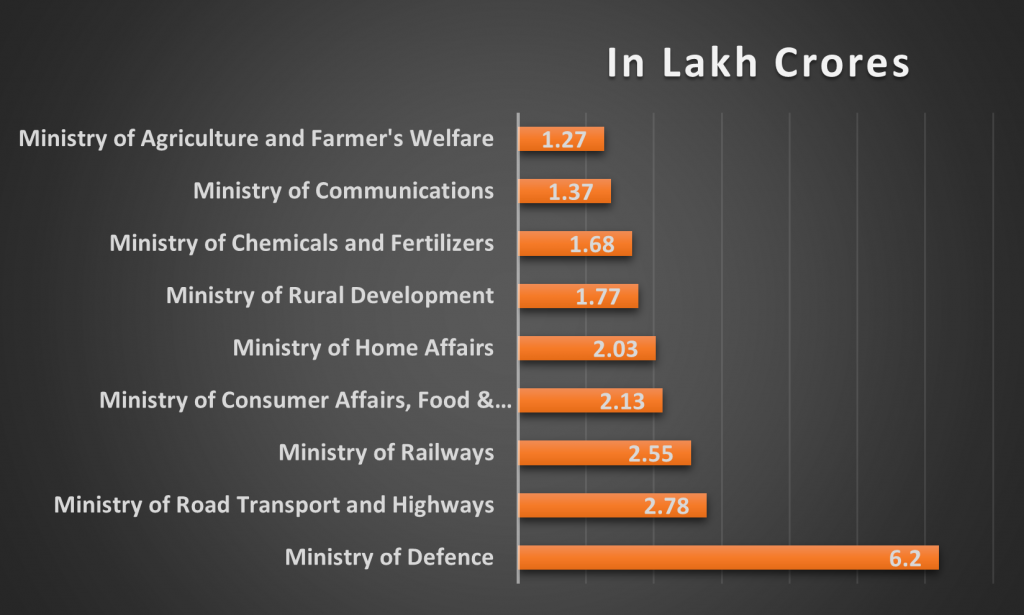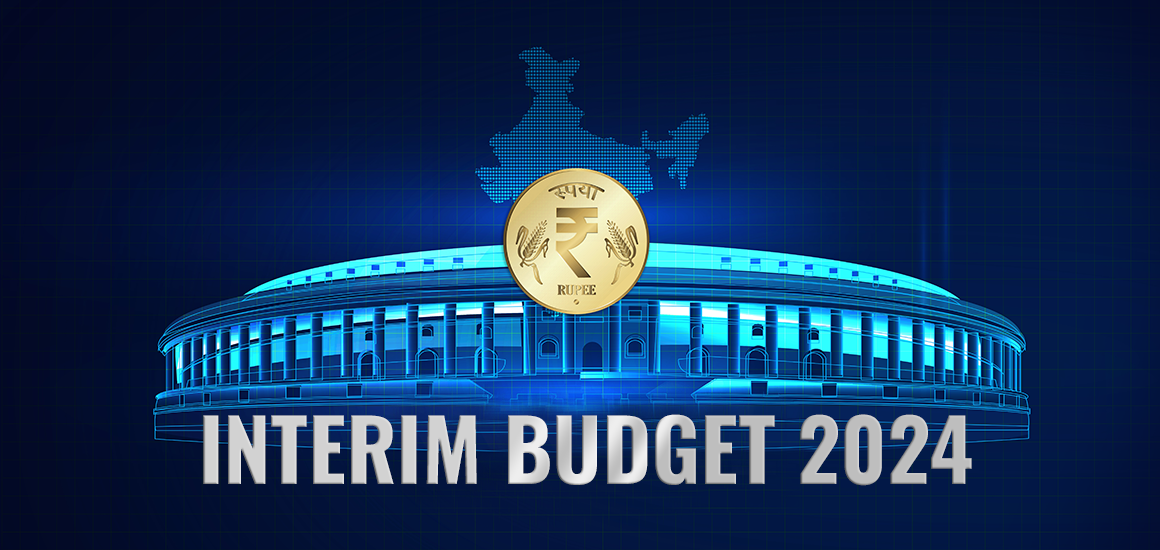Navigating Fiscal Frontiers: Unraveling FM Sitharaman’s Budget 2024
In a strategic dance between fiscal prudence and electoral dynamics, Finance Minister Nirmala Sitharaman presented her sixth consecutive budget, marking a crucial juncture for the Modi government ahead of the looming Lok Sabha polls. Breaking from conventional budgetary norms, Sitharaman assumed the role of a fiscal hawk, unveiling a bold plan of fiscal consolidation in a concise 58-minute address. Surprisingly devoid of grand gestures and free-spending proclamations, this budget prioritizes a reduced government market borrowing in FY25, aiming to amplify credit accessibility for the private sector.
Understanding India’s Interim Budget: A Bridge Between Years
In the vibrant tapestry of Indian finance, the interim budget plays a unique role. Unlike its full-fledged counterpart presented in June-July, the interim budget, presented around February, serves as a temporary financial plan for the first four months of the upcoming fiscal year. Often presented in an election year, it aims to maintain essential government operations while adhering to a “caretaker” approach, avoiding major policy announcements that could influence voters. The key objectives of this budget lie in bridging the gap between the previous year’s expenditures and the full-fledged budget prepared by the newly elected government, ensuring uninterrupted government functions and providing economic stability during this transitional period.
The Debt Market: Lifeline for India’s Growth
The Indian debt market stands as a crucial pillar supporting the nation’s economic ambitions. It acts as a conduit for capital, channeling funds from investors to the government and businesses. This facilitates critical infrastructure projects, fuels corporate expansion, and finances essential government spending. A robust debt market ensures affordable borrowing costs, leading to lower operating expenses for companies and manageable debt servicing for the government. Moreover, it offers stable returns and diversification options for investors, attracting both domestic and international participation. In essence, a healthy debt market acts as the heartbeat of economic growth, providing the funding lifeline needed to power India’s journey towards a developed nation.
Key Budget Announcements and their Impact
Big push for renewable energy
- Free solar power: One crore households to get rooftop solar panels, offering up to 300 units of free electricity per month.
- Boosting R&D: ₹ 1 trillion fund to provide 50-year, interest-free loans for private sector research in emerging industries.
Agriculture gets a boost
- Nano Dap: Following the success of Nano urea, a similar program for Nano Dap fertilizer will be launched to reduce imports and subsidies.
- Dairy development: A comprehensive scheme to promote dairy farming will be implemented.
Future-focused initiatives
- Next-gen reforms: Next-generation reforms will be unveiled in collaboration with states and stakeholders.
- Population management: A high-powered panel will be formed to address population growth and demographic changes.
Infrastructure Boost 2024
- Massive investment leap: Capital expenditure outlay tripled in 4 years, fueling growth and jobs.
- Double-digit increase: Budget allocates ₹11,11,111 crore for infrastructure, an 11.1% jump.
- Significant GDP share: Infrastructure spending represents 3.4% of India’s GDP.
- FY 2023-24 data: The Center had budgeted 13.7 lakh crore for “Effective Capital Expenditure”, which equates to 4.5% of GDP.
Fiscal Deficit Update
- FY24 Revised Deficit: 5.8% of GDP, despite earlier estimates.
- FY25 Expected Deficit: 5.1% of GDP, showing a projected improvement.
- FY26 Target: Reduce deficit to below 4.5% of GDP.
FY23-24 Revised Estimates
- Higher Revenue: Revised total receipts excluding borrowings reach ₹27.56 lakh crore, exceeding expectations.
- Tax Power: Tax receipts reach ₹23.24 lakh crore, driving revenue growth.
- Spending Surge: Revised total expenditure climbs to ₹44.90 lakh crore.
- Deficit Maintained: Fiscal deficit stays at 5.8% of GDP, meeting revised estimates.
- Revenue Surprise: Revenue receipts expected to be ₹30.03 lakh crore, surpassing budget estimates.
FY24-25 Budget Estimates
- Total Receipts: Expected to reach ₹30.80 lakh crore, excluding borrowings.
- Tax Revenue: Projected at ₹26.02 lakh crore, contributing significantly to receipts.
- Total Expenditure: Estimated at ₹47.66 lakh crore, indicating planned spending growth.
Lower Government Borrowing: More Credit for Private Sector in FY24-25
- Reduced Borrowing: Gross and net market borrowings through dated securities estimated at ₹14.13 lakh crore and ₹11.75 lakh crore respectively, lower than FY23-24.
- Private Sector Benefits: Lower government borrowing ensures more credit availability for private investments, crucial for economic growth.
- Scaling Up: Increased private investments create a virtuous cycle, boosting overall economic activity.
- Gross Market borrowing of ₹15.43 lakh crore projected for FY 2023-24
Taxation
- The tax rates for both direct and indirect taxes remain unchanged.
- Income tax demands up to ₹25,000 (for the period up to 2009-10) and ₹10,000 (from 2010-11 to 2014-15) have been withdrawn by the government, providing relief to approximately one crore taxpayers.
- The extension of tax benefits for start-ups and investments made by sovereign wealth or pension funds has been prolonged by one year, now applicable until March 31, 2025.
Allocations for Ministries

Initial Market Reactions to India’s Interim Budget 2024
Bond Yields
- Downward trend: Government and corporate bond yields fell due to the lower-than-expected fiscal deficit target (5.1% for FY25) and lower gross market borrowing estimates (Rs 14.13 trillion).
- Improved investor sentiment: This suggests confidence in the government’s commitment to fiscal consolidation, potentially leading to lower borrowing costs and a more attractive debt market.
- Caution prevails: Some analysts remain cautious, highlighting potential challenges in achieving the ambitious deficit target, especially considering election pressures.
Currency Movements
- Mixed reactions: The Indian Rupee initially witnessed appreciation against the US Dollar on the news, but later stabilized.
- Factors influencing movement: Global market cues, oil price fluctuations, and investor expectations regarding future economic policies will continue to impact the Rupee’s movement.
Investor Sentiment
- Positive outlook: Many investors reacted positively to the budget’s focus on fiscal prudence and potential for lower borrowing costs.
- Wait-and-see approach: Some investors remain cautious, awaiting further clarity on the implementation of the budget proposals and the impact on various sectors.
- Election year uncertainty: Investor sentiment may remain volatile considering the upcoming Lok Sabha polls and potential policy changes under a new government.
Expert Insights: Dissecting the Debt Market’s Response to Budget 2024
Government Bonds
- Expert 1: “Lower deficit target is positive, indicating lower supply and potentially higher government bond prices. However, achieving it might be challenging, impacting sentiment.”
- Expert 2: “Focus on infrastructure spending may drive demand for specific government bonds tied to these projects, offering attractive investment opportunities.”
Corporate Bonds
- Expert 3: “Reduced government borrowing could free up space for corporate issuers, potentially lowering corporate bond yields and improving access to capital.”
- Expert 4: “Sectoral allocations and policy initiatives announced in the budget could positively impact specific corporate bonds aligned with those sectors.”
Municipal Bonds
- Expert 5: “Limited focus on municipal finances in the budget might leave investors cautious about municipal bond risks.”
- Expert 6: “Potential urban infrastructure initiatives, if well-implemented, could create opportunities for municipal bond issuances backed by strong revenue streams.”
Retail Debt Instruments
- Expert 7: “Continued focus on government savings schemes offers stable returns for risk-averse retail investors.”
- Expert 8: “Increased focus on digital financial inclusion might create new retail debt instruments catering to this segment, expanding investment options.”
Overall Market Sentiment
- Expert 9: “Budget’s emphasis on fiscal discipline instills confidence, but achieving targets and navigating election uncertainties remain key concerns.”
- Expert 10: “Selective opportunities exist across different debt segments, but careful analysis and risk management are crucial for investors.”
A Balancing Act for Diverse Investors
While the interim budget prioritizes fiscal consolidation, different investor categories face a landscape of both risks and opportunities. Fixed-income investors may rejoice at potentially lower bond yields, but achieving the ambitious deficit target amidst election pressures remains a concern. Equity investors might see opportunities in sectors aligned with budget allocations, but broader economic factors and pre-election volatility could present challenges. Retail investors seeking stability may find solace in government schemes, while high-net-worth individuals might explore alternative investment avenues to navigate market fluctuations. Ultimately, understanding individual risk tolerance and conducting thorough research will be crucial for navigating the diverse opportunities and risks this budget presents across different investor categories.
India’s Debt Market: Charting a Course through Uncertain Waters
The 2024 Interim Budget has sent ripples through the Indian debt market, presenting a blend of cautious optimism and lingering uncertainties. While the focus on fiscal consolidation and lower borrowing has cheered investors, achieving these ambitious targets in an election year remains a hurdle. Different segments of the debt market face unique opportunities and challenges – government bonds offer potential gains with caveats, corporate bonds may benefit from reduced competition, and retail debt instruments continue to cater to risk-averse investors.
Ultimately, the future outlook for the Indian debt market hinges on several factors: the government’s ability to stick to its fiscal roadmap, the overall health of the global economy, and the outcome of the upcoming elections. While navigating these uncertainties will be crucial, the budget’s emphasis on financial prudence might pave the way for a more stable and sustainable debt market in the long run. Investors, however, must remain vigilant, actively monitoring economic data, policy developments, and potential risks to navigate this dynamic landscape with prudence and informed decision-making. The journey ahead may be uncertain, but the Indian debt market, with its inherent resilience and adaptability, stands poised to play a pivotal role in fueling India’s economic aspirations.






